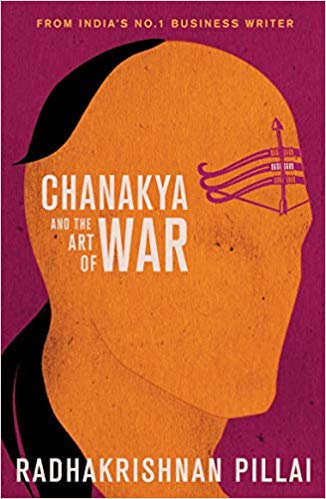We all know that Chanakya was a kingmaker, a shrewd strategist and a master at the game of politics and power. What we often fail to grasp is how we can apply his time-tested principles to our lives in the modern times. It is also no secret that his masterpiece, the Arthashastra, contains the most poignant wisdom for leaders. But how can the gems contained therein be applied to our struggles in this time and age? Radhakrishnan Pillai, rightly known to be the man who has brought Chanakya’s wisdom to the modern times, has penned Chanakya and the Art of War for this sole purpose. In fact, he is the author of several books on Chanakya, including one where he presents the teachings of Chanakya to children, and another where he talks presents these evergreen principles in very simple language for the masses, in easy-to-read knowledge capsules.
Wars can be of different types. Today, it can play out in the boardroom, between nations, within complex social structures and even in your own mind!
Chanakya and the Art of War
Chanakya and the Art of War is written in a simple and lucid manner, that is accessible to all readers. First, there are stories and then there are lessons you derive from them. This book starts off with famous stories about Chanakya and the battles he won. The manner in which he contained the undefeatable Alexander The Great is perhaps one of his most famous victories. The book describes and narrates instances from Chanakya’s life to illustrate his principles.

There are references to other great strategists of ancient India such as Lord Krishna, Shivaji, events from the Ramayana, other teachers and of course, the greatest war epic, Mahabharata.
While military warfare is discussed in the book, what i found particularly appealing is the discussion of use of psychology in strategic decision making. The use of psychological principles in war warrants attention. Chanakya also devised the four-fold strategy of war, chronicling the four ways by which wars could be won. There are discussions about games and activities that Chanakya insisted rulers pursue so that their minds were constantly under training. Understandably there is a chapter devoted to Chess, the master game of strategy.
It is also interesting to note Chanakya’s descriptions of different types of conquerors. The discussion of Dharma in this book brings out the fact that while the desire for expanding and conquering is indeed positive, it has to be done keeping ethics at the core. I feel this has great implications for modern businesses and politics as well.
How can Chanakya help YOU
War strategies find application in business and politics quite directly. The reader who really wants to get the most of this book will chew on the thoughts and distill the wisdom in a manner that will be applicable to him.
However, Dr. Radhakrishnan makes decoding the strategies presented in the book even easier through the last chapter that discusses ten principles of Chanakya and how they would help people today in their daily ‘battles ‘! Of course, today, things have changed. The way wars take place are drastically different. Yet, the spirit of strategy remains forever relevant.




